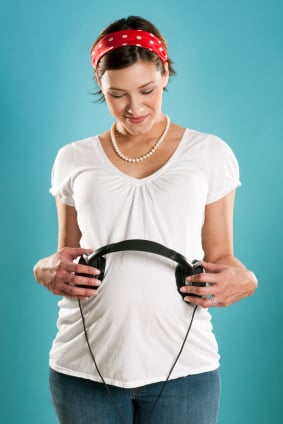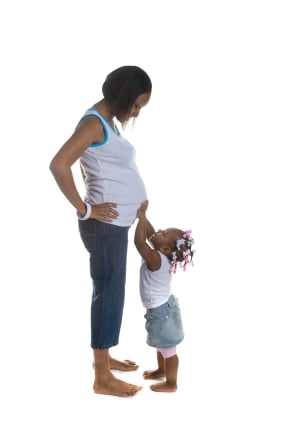 It was Christo’s first time in my early childhood music class. At eight weeks old, his mother decided it was time to get out of the house, and back to life as usual, which included my Making Music Praying Twice class that his older brother had been attending for over a year. His mom was amazed that every time I started to sing, Christo turned to me with purposeful attention. After weeks of this, we discussed it after class and his mom shared that this was a unique response. “He must know your voice from the womb!”
It was Christo’s first time in my early childhood music class. At eight weeks old, his mother decided it was time to get out of the house, and back to life as usual, which included my Making Music Praying Twice class that his older brother had been attending for over a year. His mom was amazed that every time I started to sing, Christo turned to me with purposeful attention. After weeks of this, we discussed it after class and his mom shared that this was a unique response. “He must know your voice from the womb!”
Continually, I find that younger siblings who started “attending” classes before birth, show amazing sensitivity to class and maintain extremely high music aptitudes. This is true of my youngest child. I taught several classes a week through my pregnancy until about 2 weeks before she was born. None of the other children had this advantage. The powerful depth of her tonal development is not a coincidence.
My facebook friends shared various experiences in which their young children recognize and prefer the songs from their in utero experiences. Jenn Davis shared that “it got my son to turn from breech to in the birth position a few days before they were just going to schedule a c-section.” This is a commonly used technique to try to get a breech baby to turn. A small speaker (like a headphone) is held against the mother’s body in regular intervals to lure baby down in the direction we want him to go.
 This isn’t surprising. Hearing is one of the first senses to develop. The ears appears in the third week of pregnancy and is functional by 16 weeks. By 24 weeks, the baby begins active listening. Studies have been done which show babies rhythmically “dancing” in utero to music at as young as 26 weeks. By 33 weeks, babies start to show some discrimination skills, differentiating between high and low pitches, familiar and unfamiliar sounds, and male and female voices. Over the next month, these skills grow and new listening skills develop which include increased attention, duration of attention, and response to changes in tempo.
This isn’t surprising. Hearing is one of the first senses to develop. The ears appears in the third week of pregnancy and is functional by 16 weeks. By 24 weeks, the baby begins active listening. Studies have been done which show babies rhythmically “dancing” in utero to music at as young as 26 weeks. By 33 weeks, babies start to show some discrimination skills, differentiating between high and low pitches, familiar and unfamiliar sounds, and male and female voices. Over the next month, these skills grow and new listening skills develop which include increased attention, duration of attention, and response to changes in tempo.
Not surprising clinical tests also prove that babies remember songs from the womb after birth and are soothed and comforted by these songs. This is why Amanda Sumner’s technique of soothing baby with a special music box which was played for them in the womb is effective. This is why Ashley Miller’s baby not only got to know “Moon River” when mommy sang it to her in the womb, but was able to recognize and respond when she heard the Boston Pops version!
Besides the wonderful testament to the value of unborn life, what can we learn from the stories and the research? Experts recommend that focusing on Classical and Baroque music provides the most benefit. Loud, angry, and overly fast or syncopated music can actually be a detriment to psychological and physical health, affecting brain development, hormone levels, and even heartbeat regulation, inducing high blood pressure. Gentle folk music, chant, prayer, and lullaby sung by parents and siblings and repeated after birth are extremely beneficial. Mom can rock, sway, and tap her belly to the music.
When it comes to music education, earlier is better. Even earlier than you might have thought!
Copyright 2011 Kate Daneluk
About the Author
Kate Daneluk
Kate Daneluk is a wife, mother of six, and co-founder of Making Music Praying Twice. With a background in music, theology and education, she contributes articles and resources to various publications.


.png?width=1806&height=731&name=CatholicMom_hcfm_logo1_pos_871c_2728c%20(002).png)
Comments